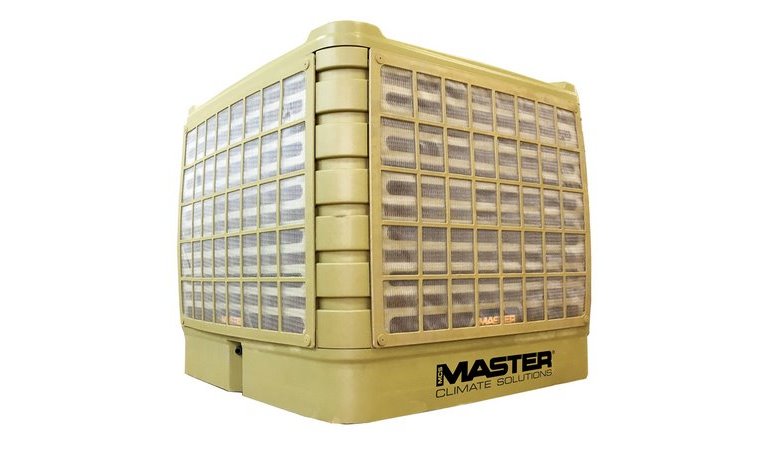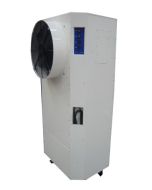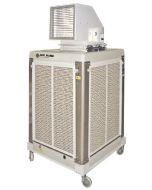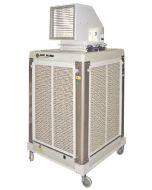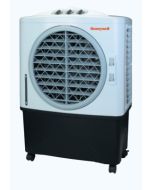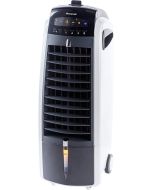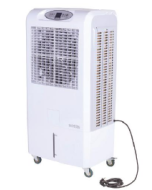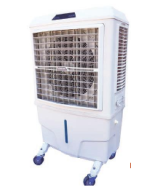Evaporative Cooling Glossary
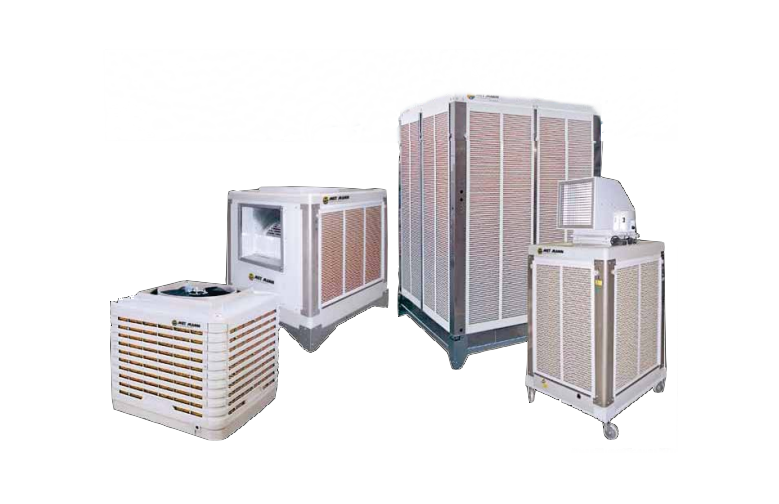
Evaporative Cooling Glossary
Adiabatic Cooling
Cooling achieved without adding or removing heat, as air absorbs water vapor during the evaporation process.
Air
Air around us is made up from a number of different gases, of which the main ones are: • Oxygen 21% • Nitrogen 78% • Carbon Dioxide 0.03% • Water vapour 0.05 – 1.50%Various other gases, including Argon make up the remainder.
Air Changes Per Hour (ACH)
The number of times the air in a space is replaced by fresh air in an hour, crucial for sizing evaporative coolers.
Blower
A mechanical device in an evaporative cooler that moves air through the wetted media and into the space. Same as a fan.
Bypass Mode
A setting in some evaporative coolers that allows air to bypass the wetted media, typically for ventilation without cooling.
Cellulose Pads
High-efficiency cooling pads made of cellulose material, used in evaporative coolers for water absorption and heat exchange.
Condensation
Water vapour change from a gaseous state to a liquid state.
Cooling Capacity
The amount of heat a cooling system can remove, typically measured in BTUs (British Thermal Units) or kW.
Cooling Efficiency
The percentage of the maximum potential cooling achieved by an evaporative cooler under specific conditions.
Dew Point Temperature
It is the temperature of air for a given vapour concentration, at which water vapour condenses.
Direct Evaporative Cooling (DEC)
A process where water evaporates directly into the air, reducing air temperature while increasing humidity.
Dry Bulb Temperature
The temperature of air measured with a standard thermometer, not accounting for humidity.
Dry Temperature
It is the temperature taken with an ordinary thermometer.
Enthalpy
Enthalpy in damp air describes the thermodynamic state from its energetic content. It is the sum of the two elements, dry air and water vapour, so that: Enthalpy = perceptible heat + latent heat
Evaporative Cooling
Reduction in temperature that occurs when liquid evaporates and removes latent heat from the surface from which the evaporation takes place.
Evaporation Rate
The amount of water that evaporates over a given time, directly affecting cooling performance.
Exhaust Air
Air removed from a space to allow fresh, cooled air to replace it, preventing over-humidification
Frigories
This is the amount of heat that is removed from a litre of water in order to lower its temperature by 1°C. It is the energy equivalent to a Kcal/hour and is the standard unit to express removal of energy to lower temperature.For example, if a cooler has a capacity of 5,000 Frigories/h, it means it can extract 5,000 kcal/h from, say, a building.
Humidistat
A device that monitors and controls humidity levels, often integrated into evaporative cooling systems.
Humidity Ratio
The ratio of the mass of water vapor to the mass of dry air in a given air sample.
Hygrometric State
For evaluating a thermodynamic state of the damp air, we use 3 values;• Atmospheric pressure • Dry temperature • Relative humidity
Indirect Evaporative Cooling (IEC)
A method where air is cooled without direct contact with water, keeping humidity levels stable.
Makeup Water
Fresh water added to the system to replace water lost through evaporation.
Media Saturation Efficiency
The effectiveness of the cooling pads in saturating the air with water vapor, expressed as a percentage.
Recirculating System
A design where water used for evaporation is collected and reused, reducing water waste.
Relative Humidity (RH)
The amount of water vapor in the air compared to the maximum it can hold at a given temperature, expressed as a percentage.
Wet Bulb Temperature
It is the temperature with a thermometer with the bulb wrapped in a piece of wetted gauze. It represents the coolest temperature air can be at the current ambient condition
Psychrometric Chart
This is a chart that shows the relationship between air and the water in different conditions of temperature, enthalpy, humidity, and vapour concentration. It is the principle tool for designers of cooling and dehumidification systems
Psychrometrics
The study of properties and thermodynamic processes of damp air
Relative Humidity
In layman’s terms it is the amount of water vapour in air expressed as a percentage of that when the air is saturated. But in psychometric terms it is actually the vapour pressure of the air at ambient temperature compared to the vapour pressure of the air at the same temperature when saturated, and is expressed as a percentage.
Sensible Cooling
Cooling that reduces air temperature without changing its moisture content.
Specific Enthalpy
This is a measure of thermal energy in air and is expressed in formulas as ‘h’ and given the SI unit of either joules per kg or kJ/kg. As temperature and/or relative humidity increase so does Specific Enthalpy
Specific Heat
This is the heat required to raise the temperature of a kg of air by 1°C.
Specific Humidity
The weight of water vapor in the air per unit weight of dry air.
Two-Stage Evaporative Cooling
A combination of indirect and direct evaporative cooling to achieve greater temperature reductions without excessive humidity.
Total Cooling Effect
The combined impact of temperature reduction and airflow on the perceived cooling of a space.
Vapour Concentration
This is the moisture content of air, i.e. the amount of water vapour contained in an air environment. It is normally expressed by separating ambient air into water mass and dry air mass and its’ unit is Kg/Kg, meaning Kg of water in 1Kg or dry air.
Ventilation Rate
The amount of air introduced into a space by the evaporative cooler, often measured in cubic feet per minute (CFM) or cubic meters per hour (m³/h).
Water Distribution System
The mechanism in an evaporative cooler that evenly distributes water over the cooling media.
Wet and Dry Bulb Thermometers
Correctly known as a psychometer, it has two thermometers that show dry temperature and wet bulb temperature.
Wet Bulb Temperature
The lowest temperature air can reach through evaporation, critical for evaluating evaporative cooling performance.
If you’re looking for help with evaporative cooling and chosing evaporative coolers, please get in touch.


